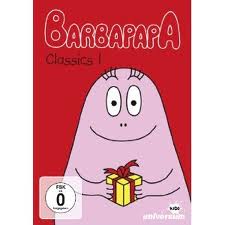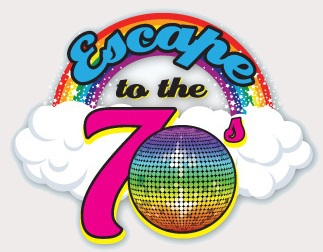Barbapapa, Les – 1973
 Writers
Writers
Talus Taylor creator
Annette Tison creator
Cast
Allen Swift
Julia Holewinski
Leen Jongewaard
Review by Chip_douglas
Before there was morphing, there was Barbapapa
Based on the French children’s books by Annette Tison and Talus Taylor, Barbapapa got his name from the french word for cotton candy: Barbe à papa (literaly father’s beard). He also resembled cotton candy, being a big pink blob. Unlike most blobs, Barbapapa was a friendly blob who could change his shape into anything he wanted to help his human and (especially) animal friends. But Barba P. soon grew lonely and went out searching all over the world (and beyond) for a mate. In some of these early episodes the series is starting to show it’s age. The Big shape changer meets up with some hippies in Trafalgar square who point him towards India, and most of the grown ups are shown smoking (because that’s what grown ups used to do in those days). When poor Barbapapa finally returned home empty handed, he found a big black female blob called Barbamama crawling out of the same garden soil he had done a couple of episodes earlier. Unfortunately they never revealed what exactly was in the ground to cause this phenomenon. The two happy blobs saw no need to marry each other since they were already called ‘mama’ and ‘papa’, and started to procreate almost immediately. (risky stuff in the early seventies: A pink male mating with a black female).
Soon a bunch of brightly colored Barbachildren hatched from eggs that Barbamama laid in the ground. They were ready to take over the show, turning their parents into background characters. In fact, Barbamama’s main purpose in the series seemed to consist of holding hands with Barbapapa. The total of seven children could perhaps be interpreted as a biblical number, or just so that the whole family in a row could form the name “Barbapapa” during the credits (and yes, all the females were stuck forming the letter ‘A’ while the males got to do the more exciting letters). Each of the Barbachildren had a different line of interest: of the four boys red Barbidur was into sports, yellow Barbidou loved animals, blue Barbibul was an inventor and black & hairy Barbouille an artist. The Barbagirls had more mundane hobbies: orange, bespectacled Barbotine naturally loved to read, green Barbalala could play any musical instrument (and/or morph into one) and purple Barbabelle with the necklace was just plain vain.
In the Dutch version I used to watch, all the voices were done by the narrator, who would also occasionally join a children’s choir in singing a song. Unlike most children’s programming of the era, most of the Barbapapa episodes featured stand alone stories. They still managed to cram a whole lot of stuff into just five minutes. Though the character design looked pretty simple, the way Barbapapa and family transformed into animal shapes, objects, vehicles or whatever fantasy object they needed was very cleverly animated. There was also some very inventive cross cut photography showing things happening above and beneath the ground (or water) simultaneously, just like in the original books by Taylor and Tison.
Since the Barbapapa’s were obviously in touch with nature, and were often described as a species of animal themselves, the show had a very strong environmental message. Nearly every episode concerned the Barbapapas saving some animals from being polluted, hunted or both. The family started off living amongst humans, but gradually moved further and further away from them to build their own funky house out of Barbaplastic (which is probably very environmentally friendly). In one particularly downbeat episode Barbapapa even built a rocket ark to take all the animal species on earth to a clean new planet. Having lost none of it’s charm, the series is still being repeated in many countries, since the message of Barbapapa is even more relevant today.






Have Your Say.....
If you have any information or thoughts on this page, please help us by popping them in the comment box below.